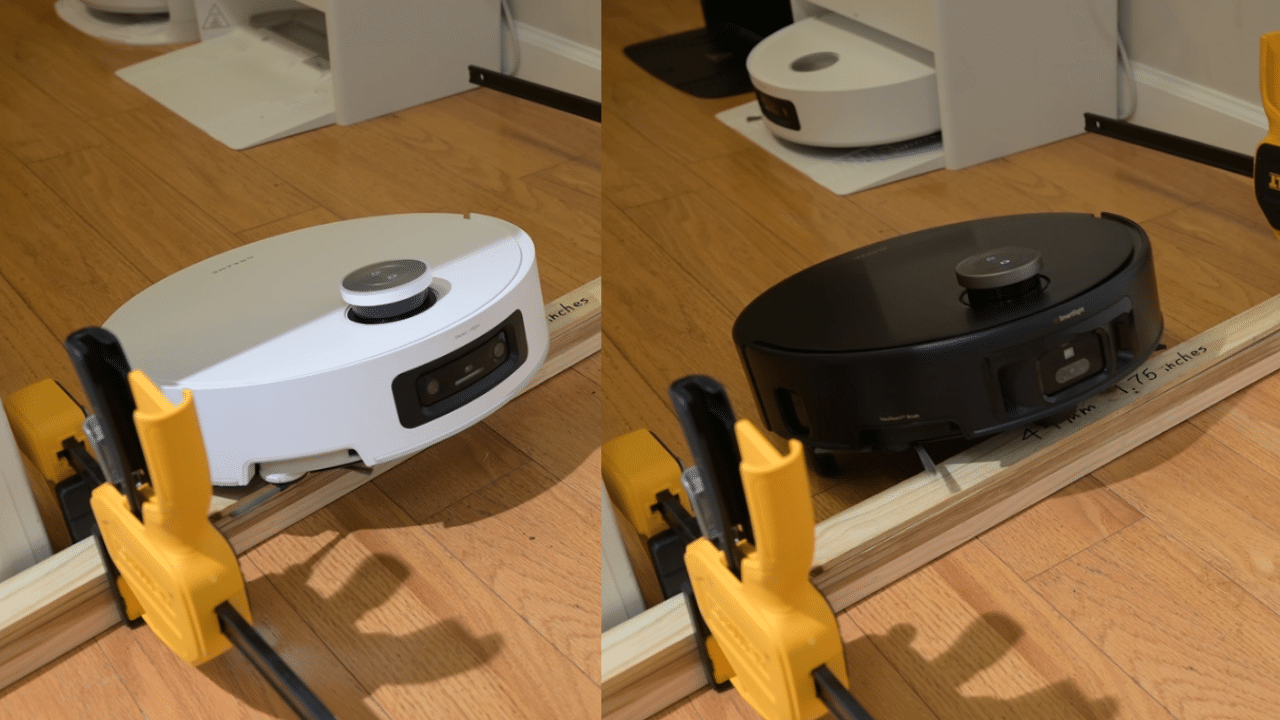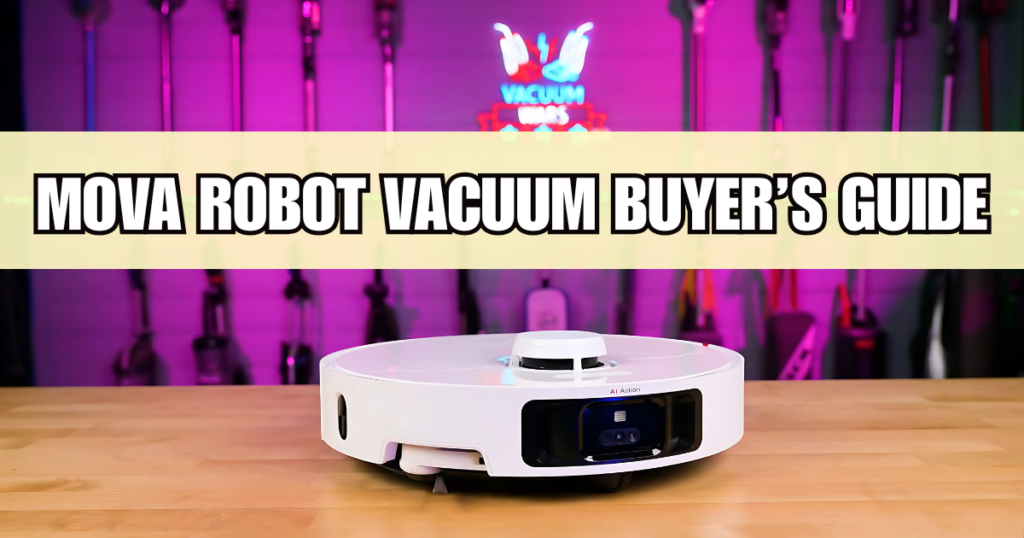Understanding Robot Vacuum Threshold Climbing
Threshold climbing has become a major focal point for premium robot vacuums in recent years. Manufacturers claim that their models can handle higher and higher floor transitions. With these big changes in the market—and with stair-climbing robots on the horizon—it was time to refine our robot vacuum threshold testing process. In this article, we’ll cover our refined threshold test method and our first results for the two robot vacuums with the highest published climb limits, the MOVA Z60 and the Dreame Aqua10 Ultra Roller. We purchased these models for ourselves and tested which one could cross the tallest single barrier without getting stuck.
Dreame Aqua10 Ultra Roller
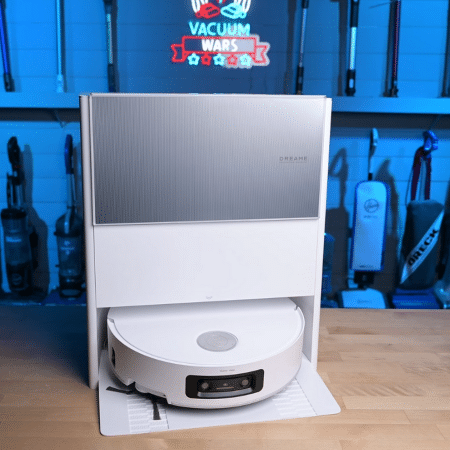
Price as of December 16, 2025
MOVA Z60 Ultra
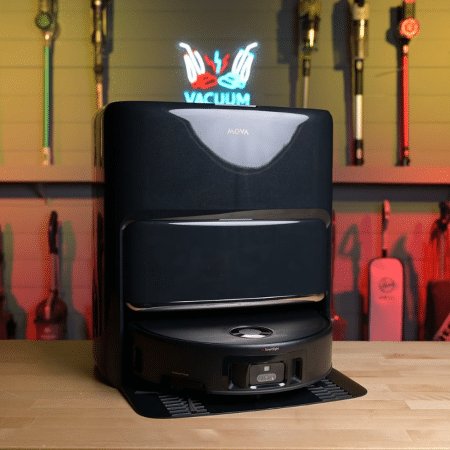
Price as of December 16, 2025
Why Threshold Climbing Matters in Modern Robot Vacuums
In the past, robot vacuums were limited to about 20mm of threshold climbing. That was fine for most standard floor plans, and nearly all robots performed about the same.
Most robot vacuums can roll over small transitions, but if the barrier is too tall, they either get stuck or turn around and avoid the threshold entirely. Homes with significant height changes between wood and tile, U-shaped chair bases, or complex floor divisions can leave a robot stranded—unable to access every room on the same level.
Some manufacturers, like Roborock, offer small threshold ramps (see at Amazon) that can be permanently placed on the floor, but many users don’t find this to be an ideal or aesthetically pleasing solution.
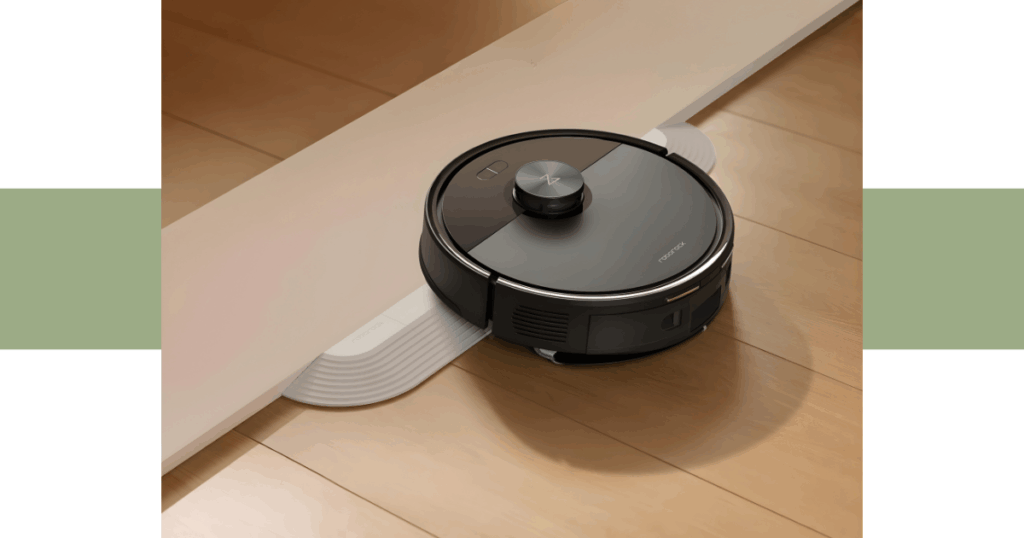
Market Shifts: The Rise of High-Climbing Robot Vacuums (2025)
As brands compete to improve mobility, threshold-crossing ability has become a key selling point. It started with Roborock’s 40mm claim on the higher-end models like the Qrevo Curv (see our review) and Saros models, followed by Dreame’s 60mm climb announcement at CES 2025.
However, these numbers apply only to what manufacturers call a “double threshold”—any threshold with two layers, such as sliding door tracks or stepped transitions between rooms. While those double-threshold numbers sound impressive, we’re most interested in what a robot can do with a single-level threshold, since that’s more relevant for most homes.
How We Test Robot Vacuum Threshold Performance
For our test, we start the robots at 19mm and add quarter-inch strips—just over 6mm each—until the robot can no longer cross. This straightforward, repeatable test is now our standard for threshold-climbing performance.
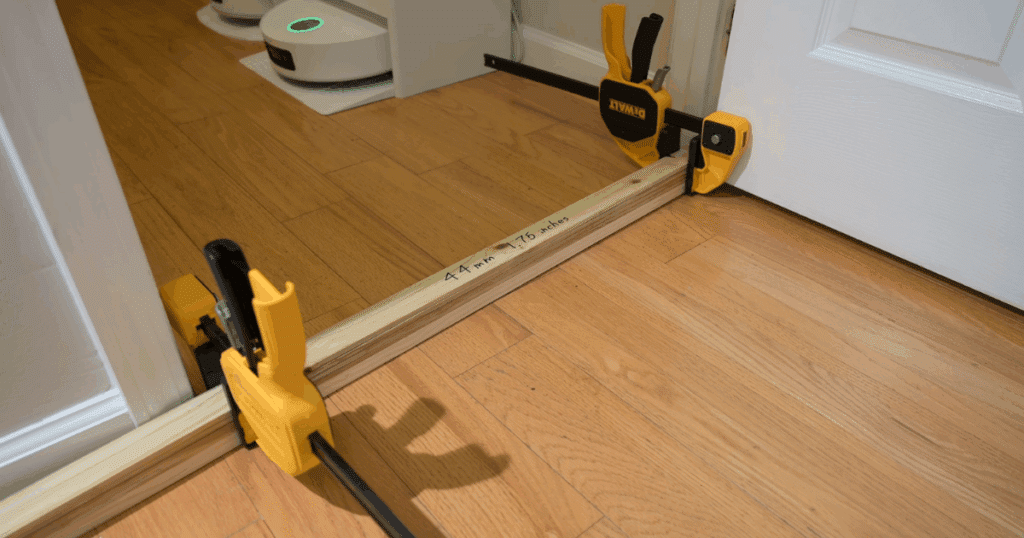
How Robot Vacuums Climb Over Thresholds
Chassis-Lifting Systems and Wheel Lift
There are a few ways robot vacuums lift themselves over obstacles. In simple chassis-lifting systems, the main wheels extend slightly to raise the robot evenly—useful for moving over carpet fibers without dragging on the pile.
The Narwal Flow (see our review), for example, achieves its 30mm single-threshold lift using an exaggerated version of this design. Its main wheels push the robot’s front end up higher, allowing it to nose itself over a barrier. (Incidentally, the Narwal Flow successfully cleared a 32mm barrier in our test, just over its official 30mm rating.)
Roborock’s threshold climbing comes from front wheel lift, which raises the nose until the main wheels can grip and pull the robot the rest of the way over.
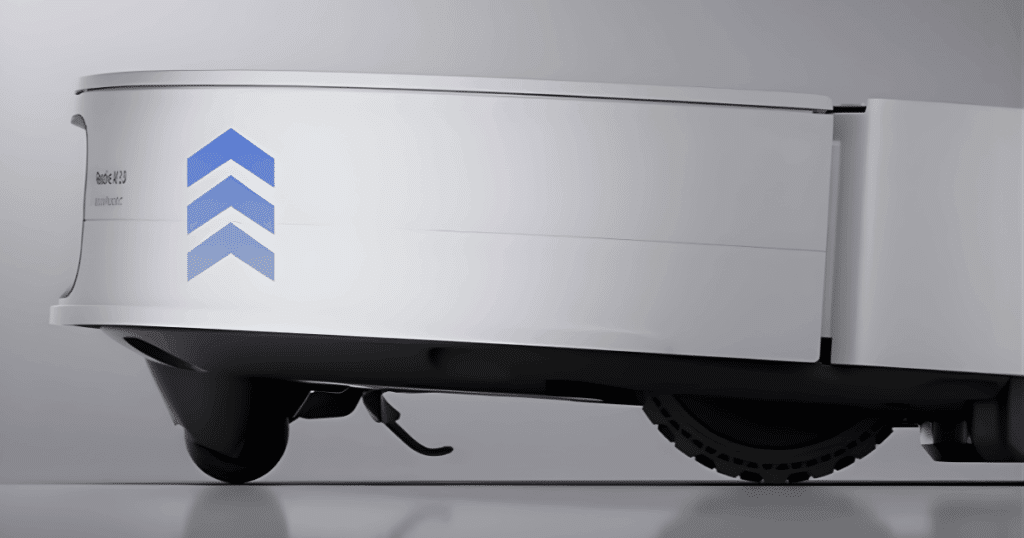
MOVA Z60 and Dreame Aqua10 Ultra Roller: The New Standard in Threshold Climbing
Our main contenders, the MOVA Z60 and Dreame Aqua10 Ultra Roller (see our full review), use what has so far been the most successful approach to robot vacuum threshold climbing. Both use a lifting chassis combined with a small actuator “leg” that gives the robot an extra boost up.

The robot evaluates the height of the threshold with sensors, then extends its actuator legs to push one side of its body over the lip. The robot momentarily straddles the threshold before the other side gains traction, effectively “walking” itself across the barrier.
It’s not the most graceful maneuver, but once the main wheels gain grip, the extender legs retract and the robot rolls over the rest of the way.

Official Threshold Climbing Limits: MOVA vs Dreame
Both robots advertise impressive climb limits that total up to 80 mm (about 3.15 inches).
- MOVA Z60 Ultra: 48 mm single-threshold / 45 mm + 35 mm double-threshold
- Dreame Aqua10 Ultra Roller: 42 mm single-threshold / 40 mm per tier double-threshold
Understanding Double-Threshold Requirements
Both models include a caveat for their double-threshold climbing claims: the tiers must have a minimum distance between them—meaning the first tier’s surface must be deep enough for the robot to rest before attempting the next climb. MOVA specifies a 70mm minimum distance between tiers, which is slightly narrower than Dreame’s 80mm requirement. While we don’t test for this, it’s a useful detail for buyers interested in double-threshold performance, as this information is often buried in the fine print.

Dreame Aqua10 Ultra Roller Test Results
In our testing, the Aqua10 managed to cross a 44mm single threshold—exceeding its own specifications. Adding another strip caused it to fail, but 44mm remains an impressive result for a single-threshold climb.
MOVA Z60 Threshold Climbing Performance
In our results, the MOVA Z60 also surpassed its official limit of 48mm, clearing an impressive 51mm barrier. That’s a full 7mm higher than the Dreame Aqua10 Ultra Roller, making the MOVA Z60 the most capable robot vacuum for single-threshold crossing on the market to date.

Threshold Climbing Specs: MOVA Z60 Ultra vs Dreame Aqua10 Ultra Roller
| Model | Claimed Single Threshold | Claimed Double Threshold | Tested Single Threshold |
|---|---|---|---|
| MOVA Z60 Ultra | 48mm | 45mm + 35mm | 51mm |
| Dreame Aqua10 Ultra Roller | 42mm | 40mm + 40mm | 44mm |
Which Robot Vacuum Climbs Higher?
In short, both models outperform last year’s standards by a wide margin, but the MOVA Z60 takes the crown for single-threshold climbing performance.
If your home includes U-shaped chair bases, uneven flooring, or raised transitions, MOVA’s extra few millimeters of clearance could make the difference between seamless cleaning and needing to rescue your robot.
Final Thoughts: The Best Robot Vacuum for Threshold Climbing
So there you have it—the MOVA Z60 currently stands as the best robot vacuum for single-threshold clearing, and our new test method will now be a regular part of our Vacuum Wars robot vacuum reviews.
MOVA Z60 vs. Dreame Aqua10: Compare Side-by-Side
Curious how the MOVA Z60 Ultra and Dreame Aqua10 Ultra Roller compare beyond threshold climbing? Use our Robot Vacuum Comparison Tool to explore more detailed specs, features, and real-world test results!
MOVA Robot Vacuum Buyer’s Guide 2025
We outline the key distinctions across MOVA’s robot vacuum lineup to help you decide which features are worth the extra cost and which ones you can skip. Whether you’re eyeing a wallet-friendly model or a top-tier robot with advanced capabilities, we’ll cover the must-know details so you can choose the right MOVA for your home and your budget. See the Guide
Frequently asked Questions
What does threshold climbing mean in a robot vacuum?
Threshold climbing refers to a robot vacuum’s ability to cross raised floor transitions, such as doorway trims or small steps between different flooring types. Models with strong threshold-climbing performance can move freely between rooms without getting stuck or needing assistance.
How high can the best robot vacuums climb?
Most robot vacuums can climb thresholds around 20mm (0.8 inches), but newer models are pushing beyond that. In our testing, the MOVA Z60 climbed 51mm, and the Dreame Aqua10 Ultra Roller reached 44mm—among the highest results currently on the market.
What’s the difference between a single and double threshold?
A single threshold is one raised barrier, like a single step or transition strip. A double threshold includes two layers, such as the tracks of a sliding door or stepped flooring transitions. Some manufacturers list higher climb ratings for double thresholds, but performance can vary depending on the spacing between tiers.
Which robot vacuum is best for homes with uneven floors?
Our testing shows that the MOVA Z60 is currently the best robot vacuum for uneven floors and tall transitions. Its advanced chassis-lifting system and actuator legs give it superior climbing ability compared to other models we’ve tested.
Do I need ramps for my robot vacuum to cross thresholds?
It depends on your home’s layout and the height of your transitions. Many modern robot vacuums, like the MOVA Z60 and Dreame Aqua10 Ultra Roller, can handle most common thresholds without ramps. However, for transitions above 50mm or for older models, threshold ramps can help ensure uninterrupted cleaning.
